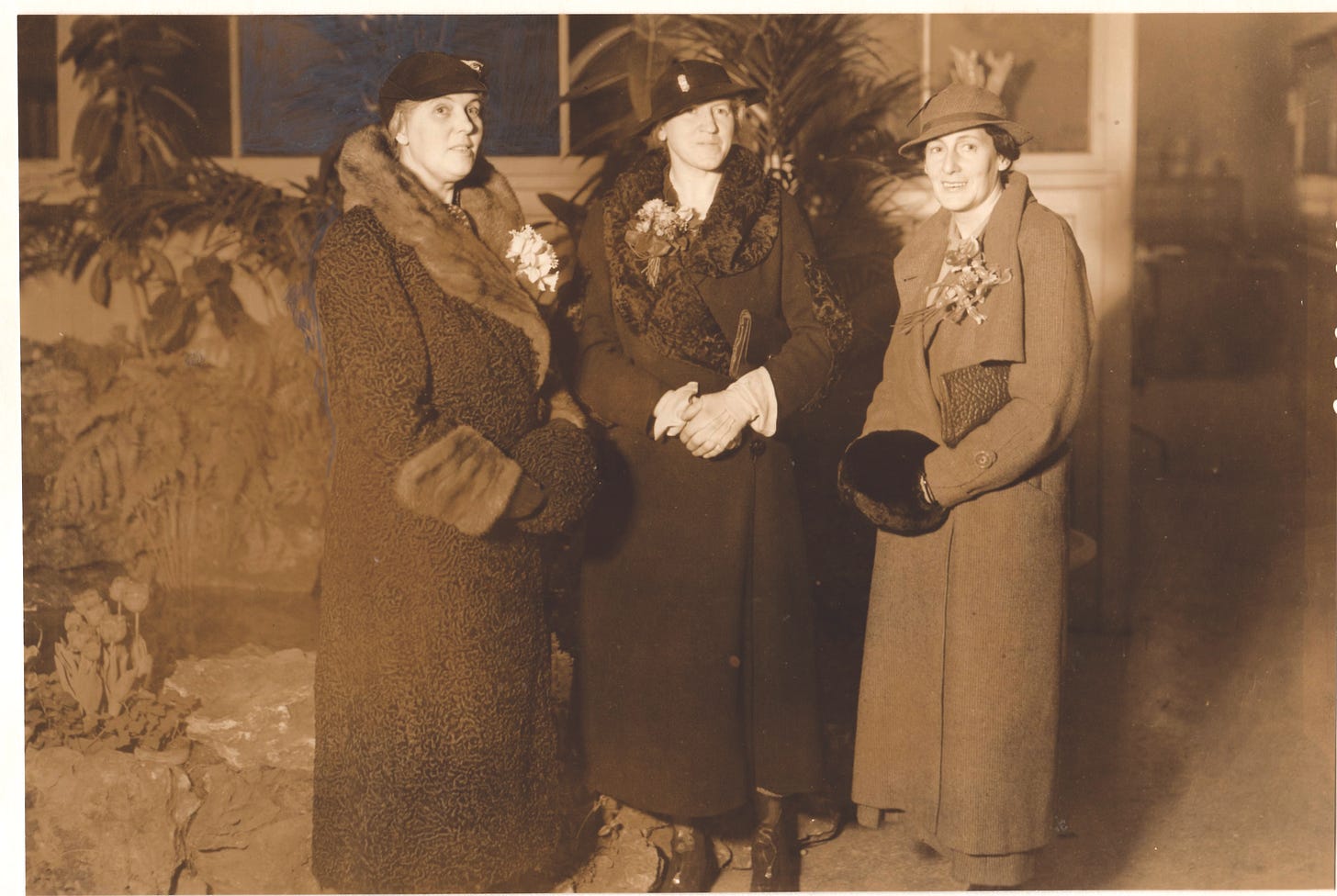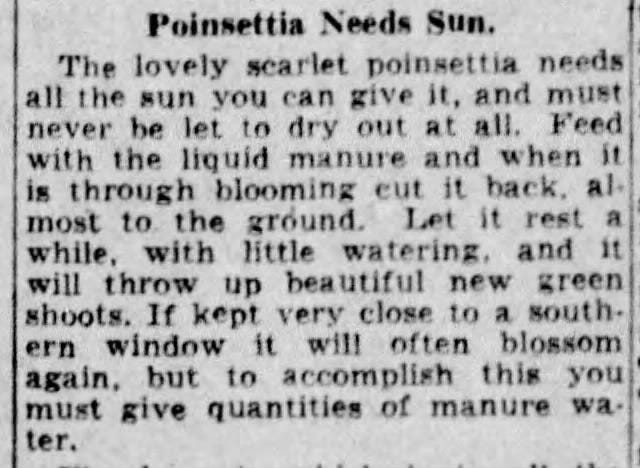
I didn’t know about Daisy Thomson Abbott until Mary Schier, who is well known to gardeners in Minnesota and other northern climate states, sent me an email…
“Are you soliciting lost ladies? I may have one for you, though she's not entirely lost as I mentioned her in my book on northern gardening.
Daisy Thomson Abbott was born in England (1/31/1883) and married a U.S. soldier at the end of World War I. He was a doctor in St. Paul, where she became a member of "high society" and a pillar of the St. Paul Garden Club. She was friends with Mary Hill -- wife of James J. Hill, railroad magnate. She had gardened in England, but had to relearn everything when she moved to Minnesota. Quite a shock.”
And that was enough information to send me down a rabbit hole to find out more about Daisy.
Daisy’s Biography, Of Sorts
I started learning more about Daisy from the 1940 census, because that’s the first “hit” I got on Ancestry.
She was 56 years old in 1940, and her husband, John S. was also 56 and a surgeon with his own office. They had two sons, one who was 19, the other 15. They also had two maids living with them. Per the census record, Daisy’s education was listed as “college, 5th or subsequent year.” The census record also tells us that she worked 52 weeks in 1939 and lists her occupation as “writer of gardening…” the rest of the hand-written census record isn’t legible. Her address was Crocus Place, St. Paul, Ramsey, Minnesota. (I’m leaving out the house number to respect the current owner's privacy.)
Digging through more records available online, I found out that Daisy got her U.S. passport in 1919, and that record shows she was born in Enfield, England, a large town in north London, 10 miles north of Charing Cross. Her father, Hilden, was from Sweden, and her mother, Lizzie, was English. She married John S. Abbott on June 27, 1919. He was a Captain in the Army during WWI and was stationed in England.
Before she got married to John Abbott, her name was Lizzie Maria Thomson. She stated on her passport application in 1919 that she expected to sail to the U.S. on July 3rd, 1919, on the S.S. Plattsburg and would live on Drayton Ave., St. Paul, upon arrival. Checking that address took me to Dayton Ave., so I assume someone spelled it incorrectly on her passport application. (Again, I’m leaving out the house number to respect the current owner's privacy.)
Daisy died December 7, 1958, aged 75. A small notice of her death appeared in The Minneapolis Star the following day and confirmed some of the details of her life that I’d discovered through Mary’s info and my searches.
Through that small write up in the newspaper, I also learned that Daisy was the garden columnist for the St. Paul Dispatch and Pioneer Press. When she died, one son lived in Milwaukee, the other in Denver, and she had two sisters in England. Her husband was also still living. (He died in August 1959.) Services for Daisy were held at St. John the Evangelist Episcopal Church in St. Paul, and she was buried in Oakland Cemetery.
Daisy’s Garden Writing
Daisy wrote two books about gardening. The Northern Garden: Week by Week came out in 1938. The Indoor Garden was published the following year, in 1939.
According to Mary, Daisy was also a garden speaker and newspaper columnist.
Say no more, let’s check out some newspaper archives!
I found several articles written about Daisy’s books, and a few articles and columns written by her, but the one that is of most interest this time of year was one she wrote for the morning edition of The Minneapolis Tribune that came out December 31, 1932, “With a Little Care, You Can Keep Your Holiday Plants A Long Time.” The subtitle revealed, “Given Water, Food, Air, in Proper Amounts, They Will Stay With You Indefinitely - How to Treat Them So They Will Flower Again Next Christmas.”
Interestingly, the first plant she wrote about in the article wasn’t the poinsettia but cyclamen. People wondered then, as we still do now, how to keep cyclamen alive as a potted plant. We also wonder how to get that poinsettia to re-bloom. Daisy has the answer!
As Mary noted in her email to me, Daisy is pretty straightforward in her gardening advice. Two of Mary’s favorite quotes from The Northern Garden: Week by Week include:
"Growing plants is a vice which attacks at any age; there is no cure, and the victim may as well realize that she will always have a lame back and dirty hands—but a beautiful disposition, if she is not called in to answer the telephone." (From the introduction to The Northern Garden)
And this one:
"To garden is to be alone and happy, not needing to talk, thinking rich thoughts and dreaming fine dreams, waiting seven years to see a peony bloom from seed, content to try time after time the same experiment—will the iris come true to color this time?" (Also from The Northern Garden)
Good, used copies of Daisy’s two books, plus re-prints are available. Just search for Daisy T. Abbott.
Unanswered Questions
Of course, a few census records, a little write up on Find-A-Grave and my friend Mary’s information give just a few hints as to Daisy’s life, which sounds like it was full and interesting. But there are always unanswered questions.
What did she do as an adult before she got married? Was she a suffragette, a volunteer at one of the hospitals? Daisy didn’t get married until she was 35 years old, and according to her passport application in 1919, John S. Abbott was her first husband. I wonder if her family thought she’d never marry.
Where did she got to school and what did she study? Was she a self-taught gardener or did she have formal training? In the 1930 census, they recorded she had no schooling, but in the 1940 census they wrote she had the equivalent of “college, 5th or subsequent year.” Did she go to school after 1930? Or did they just record it incorrectly in 1930?
Did she ever go back to England to see her family? I did find the answer to this one. Yes, she did return on several occasions, according to her passport applications and various ships’ passenger lists I found online.
Why did Daisy change her name when she got married and got her passport? I suspect that because she shared her first name with her mother, she went by the nickname Daisy and decided to use that name on her passport, effectively legally changing it.
Was Daisy a founding member of the St. Paul Garden Club? Per their website, they were founded in 1927, the 100th club to be accepted into the Garden Clubs of America. Mary said she was a pillar of the club so I assume perhaps she was there from the beginning.
Because of the limits of my online resources and subscriptions, I can’t find much about Daisy’s life before she left for the United States in 1919. But I hope she shared the stories of her life in England with her two sons and nine grandchildren.
Even without knowing about her life before 1919, I find Daisy’s life fascinating. She’s a welcome addition to the Lost Ladies of Garden Writing.
Thank you, Mary, for telling me about her!







Crocus Place seems like a perfect address for a garden writer! And I love both of those quotes from The Northern Garden. She was obviously a passionate gardener and writer.
Thanks for the article, Carol. I love that you are bringing these ladies to light.